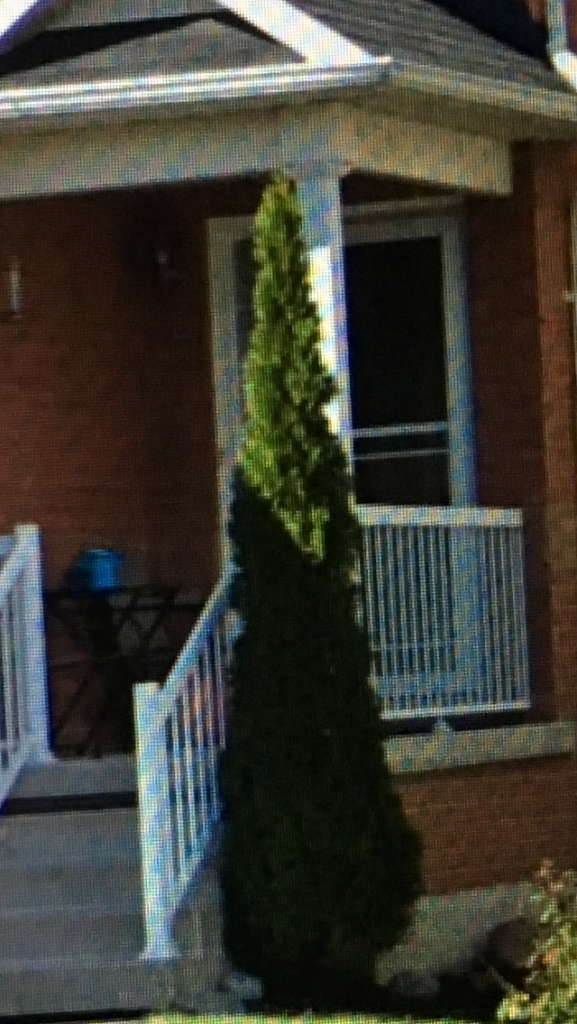
I was wondering about transplanting an Emerald Cedar that is approximately 12ft Tall. The Emerald was planted next to the front porch when it was about 3ft tall. It is now 6 years later and the 12 ft cedar is growing into the soffit of the house. I wanted to transplant it to the backyard. How large/deep would the root ball be? Is it recommended to wrap the root ball in burlap or to just place the tree right into the newly dug hole? If wrapped in burlap do I leave it on the tree? When is the best time to transplant? April? Any other information would be great. Thanks in advance.
Thank you for contacting the Toronto Master Gardeners.
We receive numerous questions concerning cedars throughout the year. The following is from one of our earlier posts titled When to Transplant Evergreens:
“The best time to transplant is the spring or early fall since temperatures are cool but not too cold. Whenever a plant/shrub is transplanted some of the plant/shrubs roots will be cut and the remaining roots will need to resettle to be able to draw nutrients and water out of the soil to survive. For this reason it is important to pack down the soil around a newly planted shrub and to water generously for the rest of the summer. I have attached a link from the University of Illinois with a bit more detail included in it. Even though this link addresses a fall transplant the info will also work for a spring planting.
https://landscaping.about.com/cs/shrubsbushes/ht/transplanting.htm
The winter would not be a good time for transplanting. The plant has gone into dormancy at this point to protect itself from the freezing cold temperatures. The ground is also helping to protect the roots from the cold as well as helping to keep the roots from drying out in the cold air. If the plant is dug up the roots will be exposed to the colder, drying air and they may snap off as well since they are intertwined with the frozen earth and are not flexible when frozen. The soil will not be able to mold itself around the roots and the roots will most likely freeze and die killing the whole shrub.”
Once you are ready to transplant make sure to water your plant thoroughly the day before you plan to move it. This should not be a problem in the soring. Since your tree was planted so close to the foundation I would suspect that your cedar will have more fibrous surface roots growing away from the foundation as well as growing deeper since the foundation is acting as a barrier. I suspect that you will likely have to dig down 3 to 4 feet and 2 feet around.
Once your tree is dug up, it should be moved as quickly as possible. If you find that a lot of the original soil is falling off of the root ball then wrapping the rootball in moist burlap or newspaper not only helps in keeping the soil around the tender roots but makes sure the roots do not dry out while you prepare the new location. If you do have to leave your transplant for a while make sure to place in a cool, shady location. Both the newspaper and burlap will decompose over time. Dig a hole in the new location that is two times wider than the root ball and the same depth. Do not add topsoil or compost or other soil amendments as this will limit root growth. Do not place soil above the root collar, please refer to the Master Garden Guide link Planting a Tree. Fill the hole half full with water and then back fill with the original soil. Press down gently and firmly to eliminate air pockets. Water thoroughly, at least two buckets full, every day for the first two weeks and continue to water every two to three days for the next couple of weeks to encourage the roots to re-establish.
Lastly, we have a wealth of information on our website with regards to transplanting cedars, cedar care etc. Simple type ’emerald cedar ‘ into the search bar located to the right of the page and you will find numerous archived posts.
Good Luck with your transplant.

